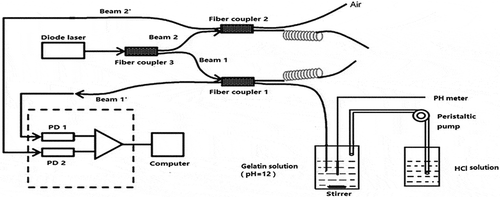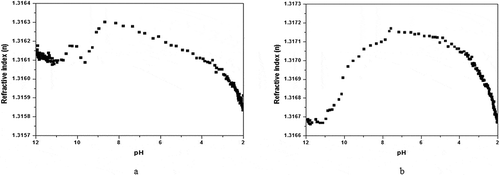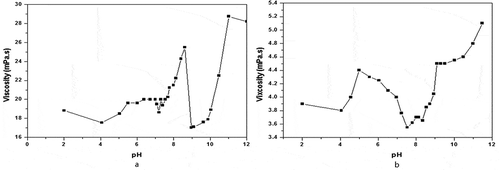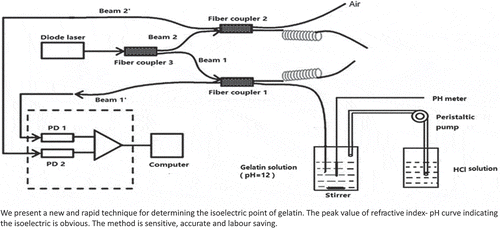Figures & data
Figure 1. Schematic of apparatus including reservoirs for solvent, peristaltic pump to deliver HCl into the mixing chamber, the peristaltic pump is controlled manually, optical power meter is controlled by the computer.

Figure 2. Titration of gelatin solutions (initial pH = 12) with 0.1M hydrochloric acid at 298.15K. The flow velocity of HCl solution is 2mL/min, typically a 15-min period, the sampling. (a), sample 1(1.5% gelatin solution); (b), sample 2 (1% gelatin solution).

Figure 3. Effect of pH on viscosity of gelatin solutions at 298.15K. (a), sample 1, 6.7% gelatin solution, number 1 rotor of the viscometer is used; (b), sample 2, 25% gelatin solution, number 0 rotor of the viscometer is used.

Table 1. The Comparison of the fiber-optic sensor and the viscosity method


